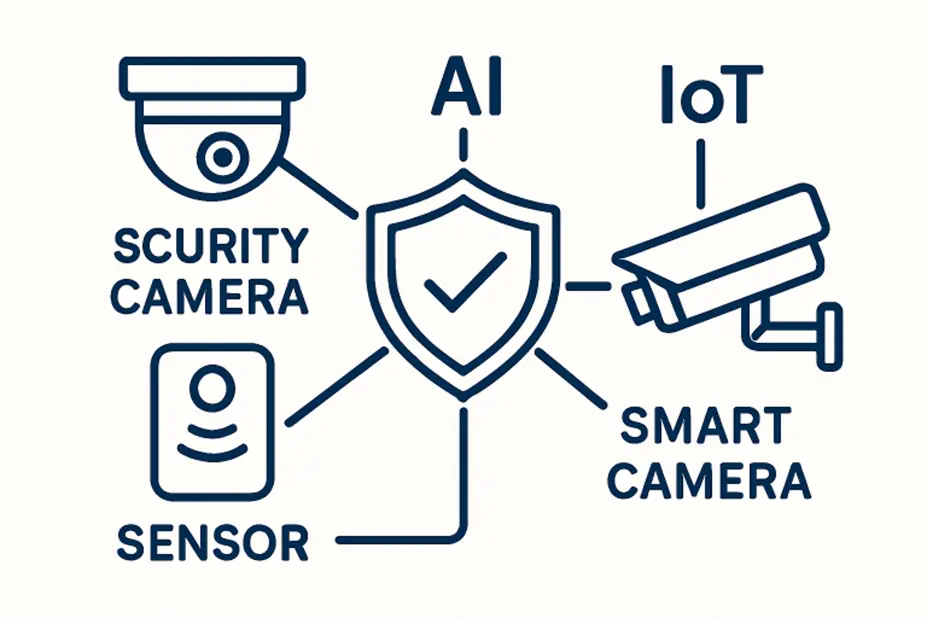How Modern Security Strategies Transform Safety
Modern security strategies have ushered in a new era of protection, blending advanced technology with innovative methodology to address increasingly complex risks. The digital transformation in security is driven by the integration of Artificial Intelligence (AI), the Internet of Things (IoT), proactive monitoring, and robust frameworks. As organizations adapt to these advances, they are better positioned to safeguard people, infrastructure, and sensitive information in a world marked by evolving threats and persistent vulnerabilities. United States Protective Services highlights the value of implementing holistic and adaptive protection models for today’s demanding environments.
As threats become more sophisticated, adopting cutting-edge security tactics is no longer a choice but a necessity. Organizations are rapidly moving beyond traditional approaches in favor of solutions that prioritize continuous verification and rapid response capabilities. This shift enhances detection accuracy, reduces reaction times, and empowers businesses to operate securely in both physical and digital realms.
By leveraging data and automation, modern security systems can predict and quickly neutralize incidents before they escalate. Advanced monitoring tools and artificial intelligence are revolutionizing the way security threats are identified, analyzed, and addressed—driving efficiency and ensuring that protective measures remain ahead of the curve. As a result, both private enterprises and public agencies are realizing the importance of adaptable and forward-thinking security blueprints.
AI and IoT Integration in Security Systems
The convergence of AI and IoT is reshaping how organizations approach safety challenges. IoT devices, such as connected cameras, sensors, and access control systems, enable seamless, real-time data collection across extensive environments. These interconnected tools form a comprehensive surveillance network, providing visibility into activities that were previously difficult to monitor and track.
Artificial intelligence takes this data a step further by delivering smart analytics. AI-driven security applications can identify unusual behaviors, recognize patterns, and instantly alert teams when anomalies arise. This blend of automation and human oversight dramatically reduces the time required to detect and respond to threats, enhancing both the effectiveness and efficiency of security operations. As Forbes discusses, this technological synergy is propelling businesses toward safer futures by emphasizing prevention over remediation.
Zero Trust Architecture: A Paradigm Shift
Traditional network security relies heavily on perimeter defenses and implicit trust—for example, by assuming devices and users within an organization should have broad access. With modern networks spanning remote workers, cloud storage, and interconnected endpoints, this model has become inadequate.
Zero Trust Architecture (ZTA) represents a fundamental shift, assuming that no user or device is trustworthy by default. Every access request is rigorously verified using multiple factors, and permissions are limited to the bare minimum necessary. It sharply reduces the risk of attackers exploiting lateral movement within a compromised environment. By enforcing continuous monitoring, micro-segmentation, and least-privilege access, ZTA has become the new gold standard for organizations seeking to protect critical digital assets.
Leveraging Data-Driven Intelligence
Security strategies grounded in actionable intelligence empower organizations to adopt a preventative posture. By utilizing big data analytics and advanced algorithms, security teams can identify unusual activity, track patterns indicative of cyber or physical threats, and take early action to neutralize risks. This approach extends beyond technology, influencing how organizations train staff, allocate resources, and define priorities for incident response and recovery.
Data-driven intelligence is critical in supporting a security culture that prioritizes learning, adaptation, and resilience. With robust analytics, leaders can visualize risk landscapes and make informed decisions, optimizing their mitigation tactics and overall safety investments. According to Forbes, using data not only improves reaction times but also helps organizations develop smarter, more adaptive policies in response to dynamic risk environments.
The Importance of Continuous Monitoring
Continuous monitoring is central to maintaining an effective security posture in today’s unpredictable threat environment. Real-time surveillance and monitoring tools systematically assess system performance, detect newly emerging vulnerabilities, and trigger rapid incident response protocols. This proactive approach ensures that security measures evolve as soon as new risks are detected, dramatically limiting exposure to breaches and attacks.
Automated alerts, combined with human expertise, enable organizations to investigate suspicious activities quickly, limit their impact, and restore operations. For sectors ranging from finance to healthcare, where minutes matter, continuous monitoring not only preserves business continuity but also strengthens stakeholder trust by ensuring ongoing safety.
Future Trends in Security Strategies
The future of security strategies will be defined by the continual integration of emerging technologies and a steadfast commitment to preventative practices. The advancements in machine learning and AI promise more effective predictive analytics, which in turn will make real-time threat assessments even more accurate and actionable. Blockchain technology, meanwhile, is being explored for its potential to secure data transactions and thwart tampering, creating additional layers of resilience and assurance.
As the security landscape becomes increasingly complex, ongoing education, training, and a culture that fosters innovation are essential for achieving long-term success. Organizations should remain vigilant and adaptable, keeping pace with new technologies and adopting frameworks that blend automation, intelligence, and human insight to protect their most valuable assets. By prioritizing these aspects, businesses and agencies will continue to thrive in an environment where safety, security, and trust are paramount.
Also Read-Smart Design at Sea: How Integrated Tech is Optimizing Space and Experience Onboard

